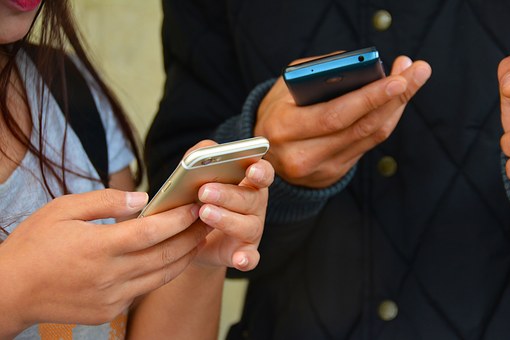To recognize the upcoming 25th anniversary of the first SMS text message ever sent, Messenger today unveiled a new global study exploring how the art of the conversation has evolved around the world. The research shows that messaging is more important than ever – with 80 percent of adults (19-64) and 91 percent of teens (13-18) messaging every day – and is a bridge bringing people closer together.
“Since the first SMS text message was sent on December 3, 1992, there has been a fundamental shift in the way people communicate, and Messenger is proud to be a part of shaping the future of connections,” said David Marcus, Head of Messenger. “We believe in the power of messages to bring the world closer together at such a pivotal time – and wanted to explore it further. Today, we are excited to unveil our new study showing the ways messaging builds bridges around the globe.”
The study uncovered five key trends from people around the world who shared their perspective on communication in the digital age:
- More devices lead to more communication
- Sidebar conversations – the secret, nonverbal chats we have on our phones – are on the rise and bring us closer together
- Emojis have brought about a new and universal language – making us more expressive than ever
- People are staying in touch – and meeting up in person – more than ever before
- Messaging lets people express their truest selves
More Devices Lead to More Communication
Some believe that the digital age has its tradeoffs in communication. The new study reveals that the diverse toolkit of channels available has improved and deepened the way people connect with one another.
- There has been an increase in the amount of communication over the past two years: People have increased their usage of various channels, but the top five include messaging (67 percent), social media (48 percent), email (47 percent), video chat (47 percent) and face-to-face (38 percent) communication.
- More modes of communication = greater social satisfaction: As modes of communication increase, people report having greater and more authentic conversations.
Sidebar Conversations Strengthen Relationships
Sidebar conversations – the secret nonverbal chats we have on our phones while in meetings, dinners or watching TV shows – get a bad rap. The research tells us they are on the rise and taking place around the world – primarily at social events and family gatherings – and draw more people together and strengthen relationships.
- Most people admit to sidebar conversations: Most people (71 percent) have sidebar conversations, and 62 percent of those that do say messaging makes them feel closer to friends (versus 36 percent of those who don’t sidebar).
- Sidebar conversations are happening around the world: People across various countries and age groups indulge in sidebar conversations, with millennials (82 percent) and teens (79 percent) most likely to sidebar.
A New Language of Hieroglyphics
Human history has shown that images are worth more than words. With the rise of visual-based communication, people are returning to more visual expressions driven by a desire for intimacy in a hectic world with an urgent need to release emotions. This is reflected in a new vocabulary of emojis, GIFs and camera-based messaging, which is making people more expressive than ever before and leading to greater conversations.
- Visual messaging is the new universal language: Most people (57 percent) have responded to a message with a GIF while 56 percent have sent a message using only emojis.
- Emojis and GIFs are ageless: 77 percent of people over the age of 55 use emojis to communicate while more than half (53 percent) use GIFs.
Keeping in Touch Thrives as Never Before
Many report that messaging has replaced other forms of communication in their lives. But across the world, face-to-face conversations continue to rise, suggesting that there may be a correlation between more messaging and greater in-person connections.
- Messaging replaces other communication channels: Half the population reports messaging has replaced their other forms of communication; 67 percent of people are messaging more than they did two years ago.
- Face-to-face conversations are increasing all over the world: People who message more are 52 percent more likely to talk face-to-face more, as compared to someone who is not messaging more. Additionally, all markets surveyed are doing more talking in person, but Brazil (+33 percent), France (+22 percent), Germany (+21 percent) and the US (+20 percent) have seen the highest increase in face-to-face interactions.
People Are Finding Their Authentic Voices
For some people – particularly those less comfortable with other forms of communication – messaging opens up doors to more authentic dialogues. The study shows that messaging removes filters, and an emotional burden. People are bolder, more impulsive and more honest when they communicate. This, the survey results suggest, leads to more authentic conversations.
- Those that are messaging are having more authentic conversations and relationships: 66 percent of people who message say they have more authentic conversations; 61 percent have more authentic relationships.
- First comes dating app, then comes messaging: One-third of people (34 percent) who started a conversation on a dating app will continue their conversation through messaging, compared to a quarter of people (26 percent) who continue conversations in person.
Overall, the research shows that the future of messaging is bright and the changing way people connect today can strengthen relationships like never before. So whether it’s a sidebar conversation cementing a friendship or using emojis to foster emotional connection, the messages we send really do matter.
About Messages That Matter This online survey was conducted by Greenberg, Inc., from April 19 through May 3, 2017, and reached 2,255 respondents in the United States, 1,001 in the United Kingdom, 1,002 in Canada, 1,004 in Australia, 1,001 in Germany, 1,000 in Brazil, 1,001 in France, and 1,000 in South Korea. All respondents use one or several messaging applications monthly or more frequently.
SOURCE Messenger




